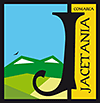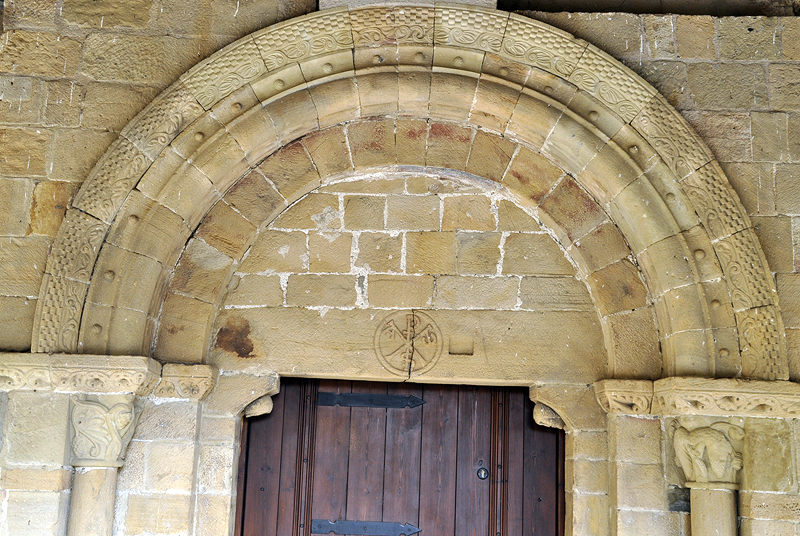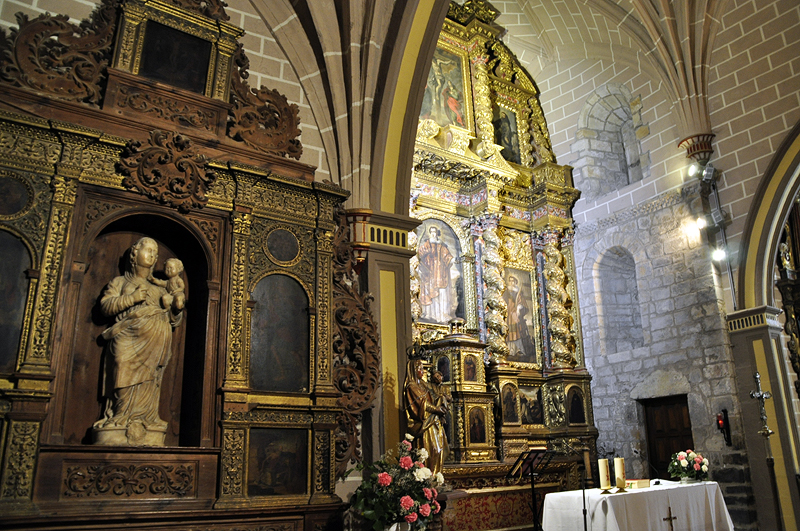The church of San Estéban in Sigües is of Romanesque origin (13th century) but suffered countless modifications in subsequent periods. The main body of the temple, made up of a single nave, dates from this early period along with the majestic semicircular apse which is reinforced by two impressive buttresses.
The wooden choir gallery was built in the 14th century and a chapel was added to either side of the chancel two centuries later, giving the church the ground plan of a cross. The sacristy also dates from the latter period. It was built next to the apse and has a star-ribbed vault. On the south side there is a portico under arches, one of the most interesting elements of the church dating from the 17th century. It gives shelter to the main Romanesque doorway, another vestige of the original building.
The doorway, though simple in composition, is noteworthy for the sculpted stone capitals on either side depicting animal and floral adornments. The one on the right shows a very common figure in the Hispanic Romanesque style – two birds with intertwined necks pecking at their own legs. The one on the left is decorated with scrolls, palms and pineapples.
On the inside, the painted main altarpiece dedicated to San Estéban is of particular interest. It is a Barroque piece from the second half of the 17th century and has one main level divided into three sections by Solomonic columns and a second level similarly divided into three parts.
The chapel on the Gospel (left) side holds the altarpiece of Our Lady (16th century). It is presided by a figure made of alabaster and completed by a series of iconographic panel paintings, of which the best example is the painting of St Jeronimo the penitent. On the Epistolary (right) side, the Gothic-style panel painting of Nuestra Señora de las Oliveras (15th century), originally from a nearby chapel, is also worth noting.
The wooden choir gallery was built in the 14th century and a chapel was added to either side of the chancel two centuries later, giving the church the ground plan of a cross. The sacristy also dates from the latter period. It was built next to the apse and has a star-ribbed vault. On the south side there is a portico under arches, one of the most interesting elements of the church dating from the 17th century. It gives shelter to the main Romanesque doorway, another vestige of the original building.
The doorway, though simple in composition, is noteworthy for the sculpted stone capitals on either side depicting animal and floral adornments. The one on the right shows a very common figure in the Hispanic Romanesque style – two birds with intertwined necks pecking at their own legs. The one on the left is decorated with scrolls, palms and pineapples.
On the inside, the painted main altarpiece dedicated to San Estéban is of particular interest. It is a Barroque piece from the second half of the 17th century and has one main level divided into three sections by Solomonic columns and a second level similarly divided into three parts.
The chapel on the Gospel (left) side holds the altarpiece of Our Lady (16th century). It is presided by a figure made of alabaster and completed by a series of iconographic panel paintings, of which the best example is the painting of St Jeronimo the penitent. On the Epistolary (right) side, the Gothic-style panel painting of Nuestra Señora de las Oliveras (15th century), originally from a nearby chapel, is also worth noting.
Sigüés Tourist Office . [ Jacetania ]
Also consult...
¤ Monuments
¤ Nature
¤ Villages
¤ Sport
¤ Tourist Offices
¤ Museums and Interpretation Centres
Guided tours 360°
Ciudadela de Jaca
[Español] · [Inglés]
Monasterio de San Juan de la Peña
[Español] · [Inglés]
Fort du Portalet
[Español] · [Francés]
follow us in...




 Comarca de La Jacetania
Comarca de La Jacetania
C/ Ferrocarril s/n 22700
JACA (Huesca)
T. (+34) 974 356 980
F. (+34) 974 355 241
:: Oficina de Turismo de JACA: 974 360 098
:: Oficina de Turismo de CANFRANC:
974 373 141
Site Map









